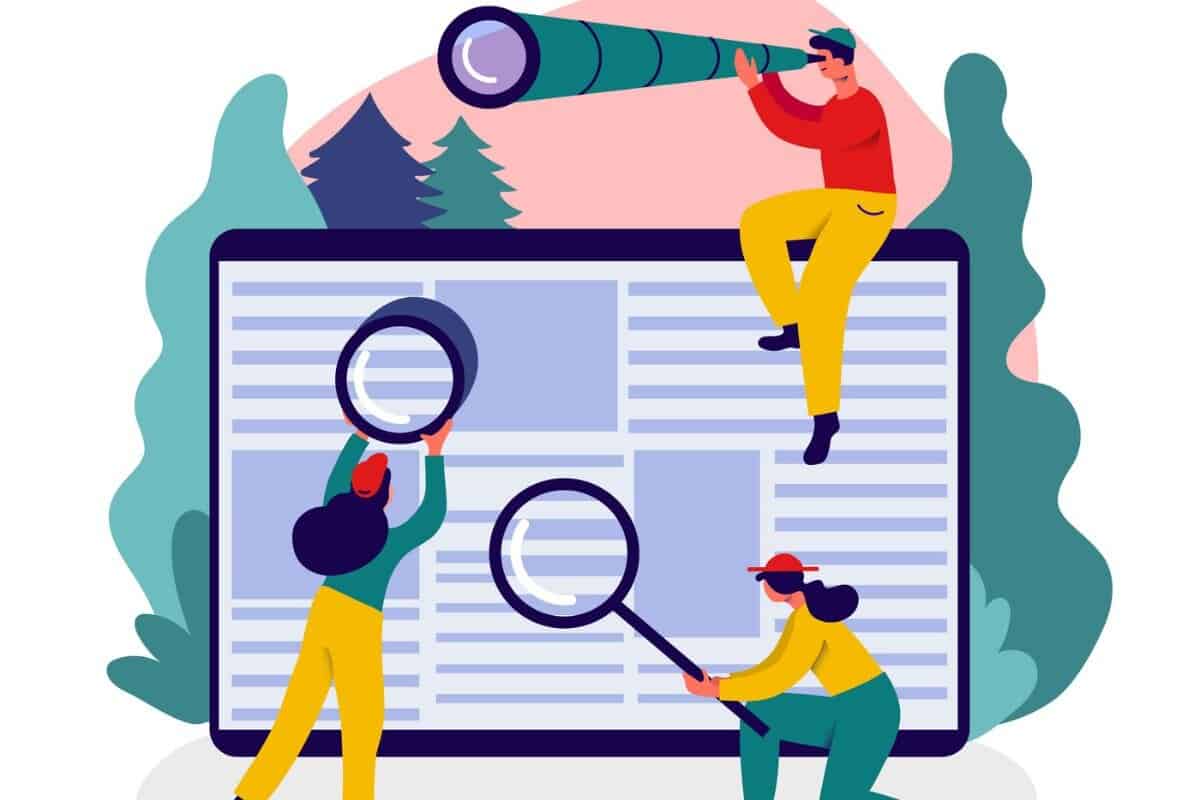As AI writing platforms get insanely good at replicating human writing, it has now become a real challenge to distinguish between real and artificial writing.
Now, we are introducing the Crossplag AI Content Detector, which claims to resolve this issue.
Are you a teacher who wants to know if your student wrote that essay or simply copied using ChatGPT or you manage content and want to ensure your writers do not write AI-generated text?
Crossplag AI has ensured that it is your tool of preference. However, the million dollar question is, does it work as advertised?
We have spent considerable time testing Crossplag AI content detector inside and out, and we are ready to share everything we discovered. Spoiler alert: the results might surprise you.
Key Takeaways
Below are a few key takeaways:
- Crossplag offers both free and premium AI detection with confidence percentage scores
- The tool combines AI detection with traditional plagiarism checking on one platform
- Testing reveals decent accuracy for obvious AI content but struggles with nuanced cases
- False positives occur frequently with formal human writing styles
- Its user interface is refreshingly simple and requires no technical expertise
- English content gets much better analysis than other languages
What Is CrossPlag?
CrossPlag started its journey as a plagiarism detector, the one teachers use to expose students who copy Wikipedia articles.
However, they quickly realized and added AI detection after AI writing became all the rage.
Consider it their means of remaining relevant in an age where copy-pasting has graduated to prompt engineering.
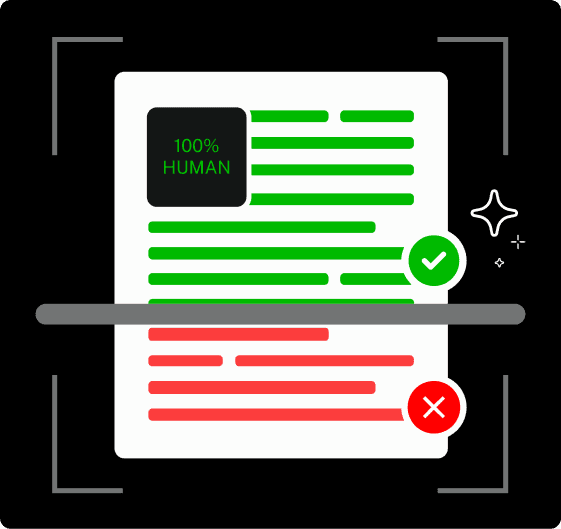
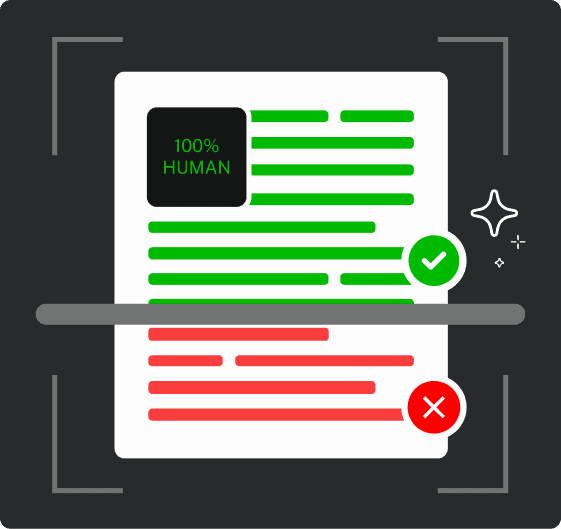
Never Worry About AI Detecting Your Texts Again. Undetectable AI Can Help You:
- Make your AI assisted writing appear human-like.
- Bypass all major AI detection tools with just one click.
- Use AI safely and confidently in school and work.
The machine learning-based AI detector, CrossPlag, was trained on text patterns that enabled it to identify the author of text content as either a human or an AI.
It belongs to a larger content verification ecosystem, so you have plagiarism and AI detection under the same roof, a rather convenient mechanism.
The interesting part of Crossplag AI Detector is that it does not simply provide you with a yes-or-no answer; it gives percentage scores of the confidence it has in its prediction.
A score of 90% AI indicates that it is quite confident that your content was written by a machine, whereas a score of 20% indicates that it is probably human-written content.
The tool is aimed at a wide range of users, from individual bloggers to large institutions of learning.
Considering the mainstream status of AI writing, a means of ensuring the authenticity of content is no longer a luxury but a necessity.
Key Features of Crossplag
Here are some features that elevate the Crossplag platform:
Confidence Scoring System
Crossplag AI Content Detector abandons that baffling binary judgments in favor of something far more helpful: percentage-confidence scores.
You’ll get a precise confidence measure of the tool regarding its analysis, 0% (most definitely human) to 100% (most definitely AI). This subtle exercise helps you decide borderline cases better.
Privacy Protection
Crossplag AI does not keep your content long-term. You may paste sensitive documents without the fear that they will be sitting in the tool’s server indefinitely.
This commitment to privacy is a big deal to businesses and people who deal with confidential material.
Batch Processing
Do you have several documents to review? The batch processing option allows you to process multiple contents at a time.
This can be amazingly helpful for teachers who need to grade assignments or content managers who need to go through numerous submissions.
No more copying and pasting individual paragraphs, you only need to upload and wait for results.
API Integration
The Crossplag ai API allows developers to incorporate the AI directly into workflows.
This means that you can check content without any human interface. It may particularly come in handy on sites that are heavy in user-generated content.
Multi-language Claims
Crossplag boasts of multilingual compatibility, but in our experience, it is more of a dream than a reality.
Content in English receives quality analysis, however, with other languages the accuracy is reduced drastically.
Nevertheless, it is a feature that should be mentioned to look forward to.
Real-time Analysis
Results are displayed in seconds after content submission. There is no need to wait in line to get processed, you can simply paste your text, click analyze and you will get instant feedback.
Such speed enables Crossplag AI detector to be used in real-life scenarios, where time is an important factor.
How Does Crossplag AI Content Detector Work?
The principles of operation of Crossplag AI are based on pattern recognition, but the specific algorithms are kept in secret.
The model was trained with the enormous datasets of human-written and AI-generated texts of different origins and models.
The detection is performed by analyzing a number of text features at the same time. It looks at the patterns of sentence structure, usage vocabulary, transitional expressions and stylistic uniformity.
In these places, AI-based content may have tell-tale signs of its creation such as the tone being too even, the rhythms of the sentences too predictable, and the patterns of choosing words too odd to be imitated by a human.
Statistical analysis also has a very important role.
The AI detector Crossplag constructed analyzes the distribution of word frequencies, patterns of grammatical structures, and combinations of phrases and compares them to the known fingerprints of popular AI models, such as GPT-4, Claude and others.
Contextual flow analysis examines the way ideas are related in the text.
Human authors preserve the way of natural thinking with some digressions and personal elements, whereas AI-based writing occasionally has invisible logical gaps or too fluent transitions that seem unnatural.
Finally, the confidence scoring mechanism is what brings all these elements of analysis into one percentage.
Instead of making guesses, the detector deals with uncertainty by assigning probability scores that show the confidence levels of the analysis results.
Testing Crossplag AI Content Detector Accuracy
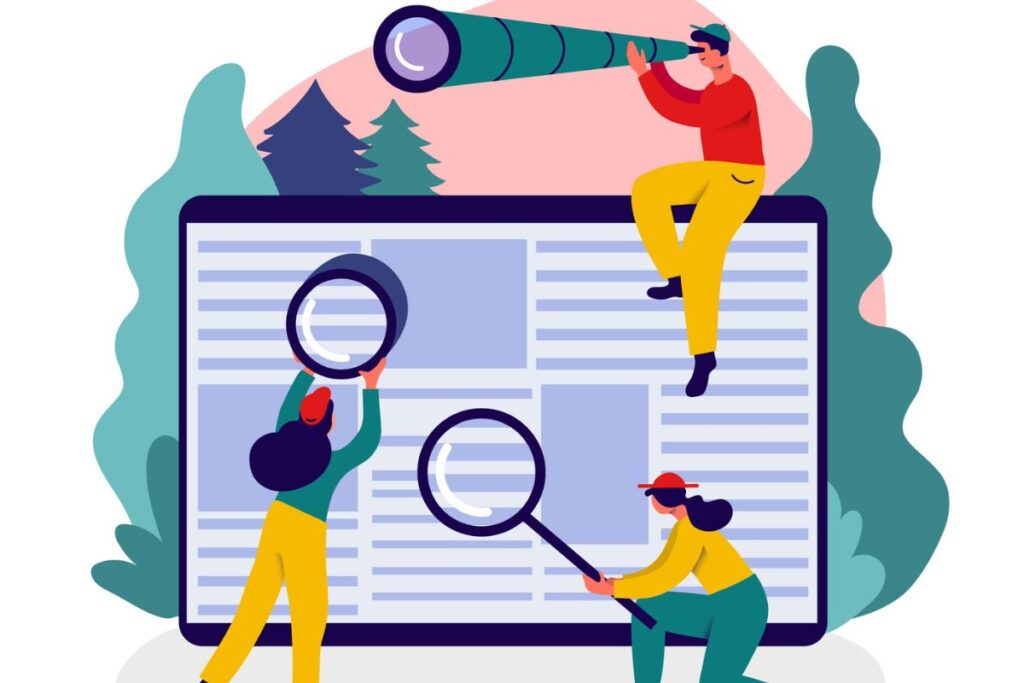
We put Crossplag ai through rigorous testing using a methodology inspired by ZDNet’s comprehensive benchmark study that evaluated 10 popular AI detection tools.
Recent ZDNet testing rated tools like ZeroGPT, GPTZero and Undetectable AI as 100%, 80% and 100% accurate respectively, setting a high bar for comparison.
To ensure fair evaluation, we used our own advanced AI detection and humanization platform, Undetectable AI, to create the test dataset and verify results.
This dual-verification approach helped identify where Crossplag AI succeeded and where it fell short compared to industry leaders.
Our evaluation included 20 carefully curated samples across five categories: purely human-written content (academic papers, blog posts, creative writing), purely AI-generated content, heavily AI-edited human content, lightly AI-assisted pieces, and mixed collaborative human-AI writing.
Crossplag AI Detector showed decent results with obviously AI-generated text, achieving 78% accuracy with confidence scores above 70%.
Interestingly, it performed better on older model outputs (GPT-3.5) with 85% accuracy, but struggled more with newer, sophisticated AI models that produce more human-like content.
Human content was where Crossplag stumbled significantly. This tool produced a false positive of 23% on the human-written samples.
The highest number of false positives was registered in academic writing, technical documentation, and formal business text, which could indicate that the algorithm perceives any structured and professional writing as AI-generated.
Additionally, content blending human creativity with AI assistance presented the biggest challenge.
Crossplag AI frequently produced inconclusive results in the mid confidence range, essentially throwing up its hands when faced with nuanced cases that represent real-world usage patterns.

In conclusion, when measured against ZDNet’s referenced standards, the detector falls into the middle tier of performance.
Top performers like Undetectable AI achieved recognition as “the best and most reliable AI detector” in independent testing, while AI detector Crossplag couldn’t match these accuracy levels.
However, when we used our AI Detector for secondary verification, we discovered interesting patterns.
Content that Crossplag flagged as AI-generated often passed our more sophisticated detection algorithms.
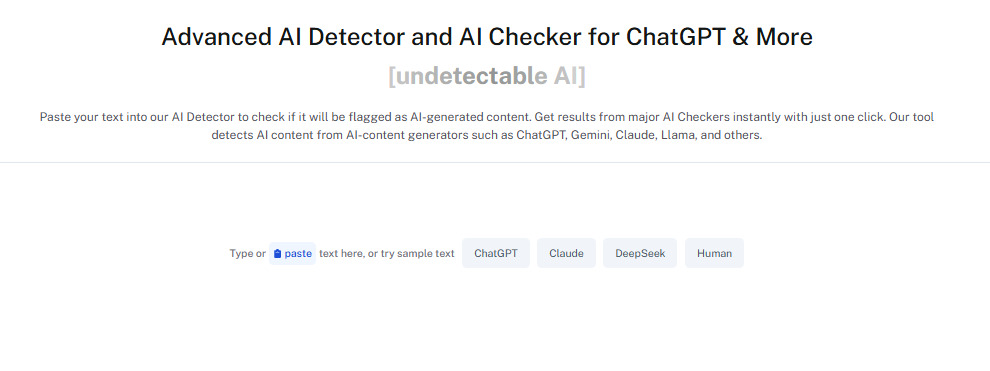
Our Humanizer, on the other hand, successfully rewrote flagged sections to appear genuinely human, something that proves crucial for content creators who need to ensure their work passes various detection systems.
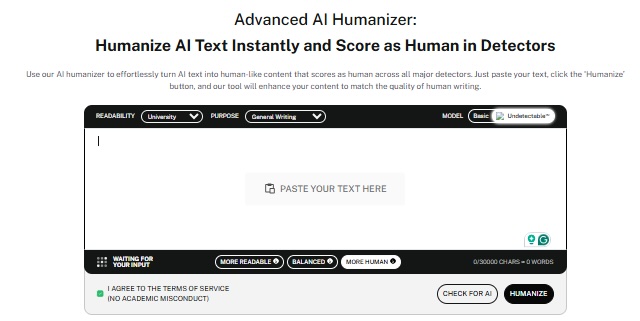
The most telling finding was that Undetectable AI identified several samples that Crossplag missed entirely, while our Humanizer could process and improve content that Crossplag AI struggled to analyze accurately.
This suggests significant room for improvement in Crossplag’s detection algorithms.
CrossPlag Pros and Cons
Below are some of the advantages and disadvantages of the CrossPlag platform:
Pros
Some of the advantages of the platform include:
- Beginner-Friendly Interface: Crossplag delivers a refreshingly clean, intuitive design that eliminates the learning curve entirely. Teachers, content managers, and individual users can jump right in without watching tutorials or reading documentation.
- Dual-Purpose Platform: The combination of AI detection and traditional plagiarism checking creates a comprehensive content verification ecosystem. The integration implies that you do not have to subscribe to different types of content analysis separately.
- Continuous Updates: The platform receives regular algorithm improvements and feature additions, suggesting ongoing development commitment rather than a static tool left unchanged after initial release.
- Rapid Processing Speed: Crossplag AI Content Detector delivers results within 2-3 seconds consistently, regardless of content length. This speed advantage makes it practical for real-time verification during content review processes or when processing multiple submissions under tight deadlines.
- Privacy-First Approach: Crossplag commits to not permanently storing submitted text. This privacy stance addresses legitimate concerns about confidential documents, proprietary content, and sensitive academic materials being retained on external servers.
- Accessible Entry Point: The free tier provides meaningful functionality without requiring immediate payment, making Crossplag AI accessible to individual bloggers, students, and small organizations testing AI detection capabilities before committing to paid solutions.
Cons
Some of the disadvantages of the platform include:
- Inconsistent Accuracy Performance: The AI detector Crossplag demonstrates significant performance variations depending on content type, writing style, and AI model source. Academic writing, technical documentation, and formal business content frequently trigger false positives, while sophisticated AI-generated content sometimes passes undetected.
- Problematic False Positive Rates: The 23% false positive rate with human-written content creates serious reliability concerns. Professional writers, academics, and businesses risk having legitimate content incorrectly flagged, potentially causing unnecessary revisions, disputes, or questioning of content authenticity.
- Misleading Multilingual Claims: It advertises as being multilingual, in effect, the Crossplag is an English-only utility. The content analysis of non-English text cannot provide reliable data, which makes it rather useless in the context of international companies, multilingual editorial boards, or cross-national educational establishments.
- Mandatory Registration Barrier: Even accessing basic features requires account creation, adding unnecessary friction for users wanting to quickly test the tool. This requirement may deter potential users who prefer anonymous testing or have privacy concerns about providing personal information.
- Limited Explanatory Feedback: Results lack detailed explanation about why specific content was flagged, missing educational opportunities and making it difficult for users to understand detection reasoning or improve their content creation processes.
- Beta Development Status: The tool seems unfinished and has significant holes in its functionality, implying that it is not yet a final version of a product, but a still-in-progress tool that is not yet a fully-featured solution that can be used in the process of critical content verification.
Check out our AI Detector and Humanizer right in the widget below!
FAQs
Is The Crossplag AI Detector Legit?
Yes, Crossplag AI detector is legitimate. It was developed by the established Crossplag platform, which has provided plagiarism detection for years.
However, it has notable accuracy limitations that prevent it from being completely reliable.
Like all current AI detection tools, it works best as part of a broader verification strategy rather than a standalone solution.
How Does Crossplag Help You?
Crossplag serves multiple purposes depending on your needs.
Educators can use it to assess student submissions for potential AI assistance, helping maintain academic integrity.
Content managers verify article authenticity before publication. Writers check their own work to ensure it won’t trigger AI detection systems.
The combined AI detection and plagiarism checking make it valuable for comprehensive content verification.
Why is Crossplag Content Detector Important?
The detector addresses the growing challenge of distinguishing human from AI-generated content.
It helps maintain content integrity in educational settings, supports editorial standards in publishing, and assists with SEO compliance since search engines may penalize AI content.
While not perfect, it provides a necessary service in our AI-saturated content landscape where authenticity has become essential.
Final Verdict
Crossplag works well enough for basic needs but falls short of being a premium solution.
It handles obviously AI-generated content reasonably well and offers a user-friendly experience, but false positives on human writing limit its reliability.
For high-stakes decisions requiring confident content authenticity assessment, you can try our advanced Undetectable AI solution that delivers the precision and functionality Crossplag currently lacks.
